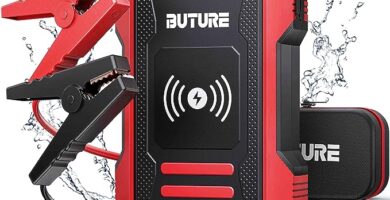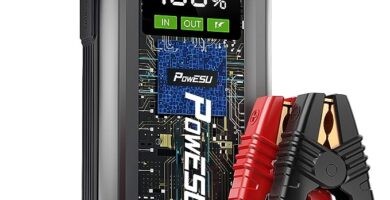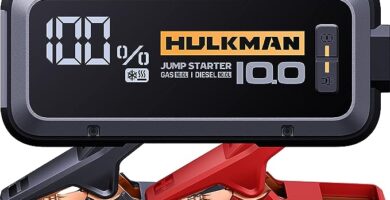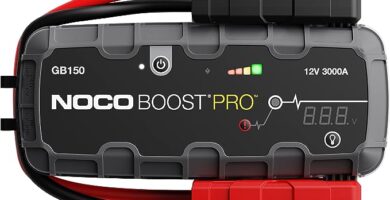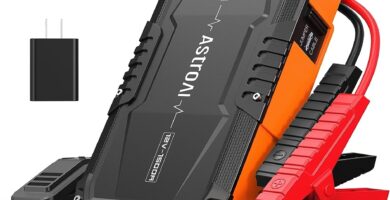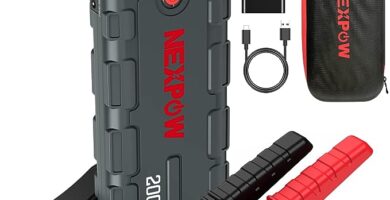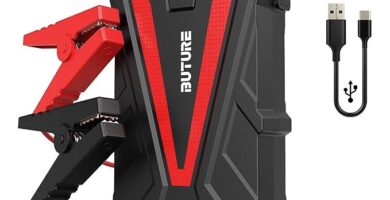
Welcome to our comprehensive guide on maintaining your car battery jumper. If you own a portable jump starter or are considering getting one, it’s crucial to understand how to keep it in top-notch condition. In this article, we’ll explore the ins and outs of jump starter maintenance to ensure that it’s always ready to rescue you from a dead battery. Whether you’re a seasoned driver or new to the world of portable jump starters, this guide is your go-to resource for keeping your car battery jumper in peak performance.
Car Battery Jumper Maintenance – Your Key to Reliability
Why Is Maintenance Important for Your Car Battery Jumper?
Before we dive into the specifics of maintaining your portable jump starter, let’s understand why it’s essential. Your car battery jumper is your lifeline when faced with a dead battery situation. Neglecting its maintenance can lead to unpredictable performance and potentially render it useless when you need it most. Proper maintenance also ensures that your jump starter is always reliable, offering peace of mind and safety on the road.
1. Regular Inspection for Optimal Performance of Your Car Battery Jumper
Regular inspections are the cornerstone of jump starter maintenance. Follow these steps to keep your device in top shape:
- Visual Examination: Start by visually inspecting the jump starter. Look for any physical damage, cracks, or loose connections. Ensure that the unit is clean and free from debris.
- Check the Battery: Examine the jump starter’s battery for signs of corrosion or leakage. Clean any corrosion with a mixture of baking soda and water, ensuring the connections are clean and tight.
- Inspect Cables and Clamps: Carefully check the jumper cables and clamps for fraying, wear, or damage. Damaged cables can reduce efficiency and even pose safety hazards.
2. Charging and Storage Guidelines
Proper charging is crucial to maintain the functionality of your car battery jumper. Follow these guidelines:
- Regular Charging: Even if you haven’t used your jump starter, it’s advisable to recharge it every three months. Lithium-ion jump starters may self-discharge over time.
- Use the Right Charger: Always use the charger that came with your jump starter or one recommended by the manufacturer. Avoid using incompatible chargers, as they can damage the battery.
- Don’t Overcharge: Avoid leaving your jump starter plugged in for extended periods after it’s fully charged, as this can reduce the battery’s lifespan
Storage. Proper storage is equally important, especially if you don’t use your jump starter frequently. Here’s how to store it effectively:
- Clean and Disconnect: Before storing your jump starter, ensure it’s clean and free from debris. Disconnect the clamps and cables.
- Cool, Dry Place: Store your jump starter in a cool, dry place away from direct sunlight and extreme temperatures. Avoid exposing it to extreme cold, which can affect battery performance.
- Regular Checks: Periodically check the charge level and recharge as needed, typically every three months.
3. Testing Your Car Battery Jumper
Regularly testing your jump starter ensures that it’s in working condition when you need it. Here’s a simple procedure:
- Safety First: Ensure both the jump starter and the vehicle are turned off before testing.
- Connect and Test: Connect the jump starter to your vehicle’s battery as you would during a jump start. Attempt to start the engine. If it starts successfully, your jump starter is in good working order.
- Monitor Charge Level: Pay attention to the jump starter’s charge level. If it’s low, recharge it immediately.
4. Emergency Situations and Troubleshooting
In some situations, your car battery jumper might not work as expected. Here’s how to troubleshoot common issues:
- Weak Jump Starter: If your jump starter struggles to start the engine, check the battery’s charge level. Recharge it if necessary.
- Faulty Clamps or Cables: If the clamps or cables are damaged or loose, they can affect the jump starter’s performance. Replace or repair them as needed.
- No Power Indicator: If the jump starter doesn’t power on when you press the button, check if it’s charged. If not, charge it. If it still doesn’t work, contact the manufacturer for assistance.
5. Mind the temps
Whenever possible, store your jump starter in a moderate temperature environment between 50 ºF – 70 ºF. Like vehicle batteries, exposure to extreme temperatures is detrimental to jump starter batteries, both in the short term and long term.
6. Respect the cycle
Every jump starter is subject to a duty cycle in which the vehicle can be cranked only so long before a period of rest is needed. For almost all jump starters, the recommended duty cycle is between 5-6 seconds of cracking followed by 3-5 minutes of rest.
7. Clean the clamps
A battery in poor condition may have battery acid on the posts, so wiping down the clamps after jump starting a vehicle always is a good practice to keep the clamps from becoming corroded. A mixture of baking soda and water watched with a wire brush is also good practice on clamps that have high amounts of acid contact.
In summary, maintaining your car battery jumper is essential to ensure its reliability when facing a dead battery. Regular inspections, proper charging, and careful storage are the keys to keeping your portable jump starter in optimal condition. Remember also, to test it periodically to confirm its functionality. With these maintenance tips, your jump starter will always be ready to come to your rescue, providing peace of mind and safety on your journeys.
By following these expert tips, you can ensure that your car battery jumper, whether it’s a portable jump starter or any other type, remains your trusted companion for years to come. Don’t wait until you’re stranded with a dead battery – start maintaining your jump starter today!
You still don’t have your jump starter?
If you still don’t have one here you have the top 10 jump starters and some reviews.
